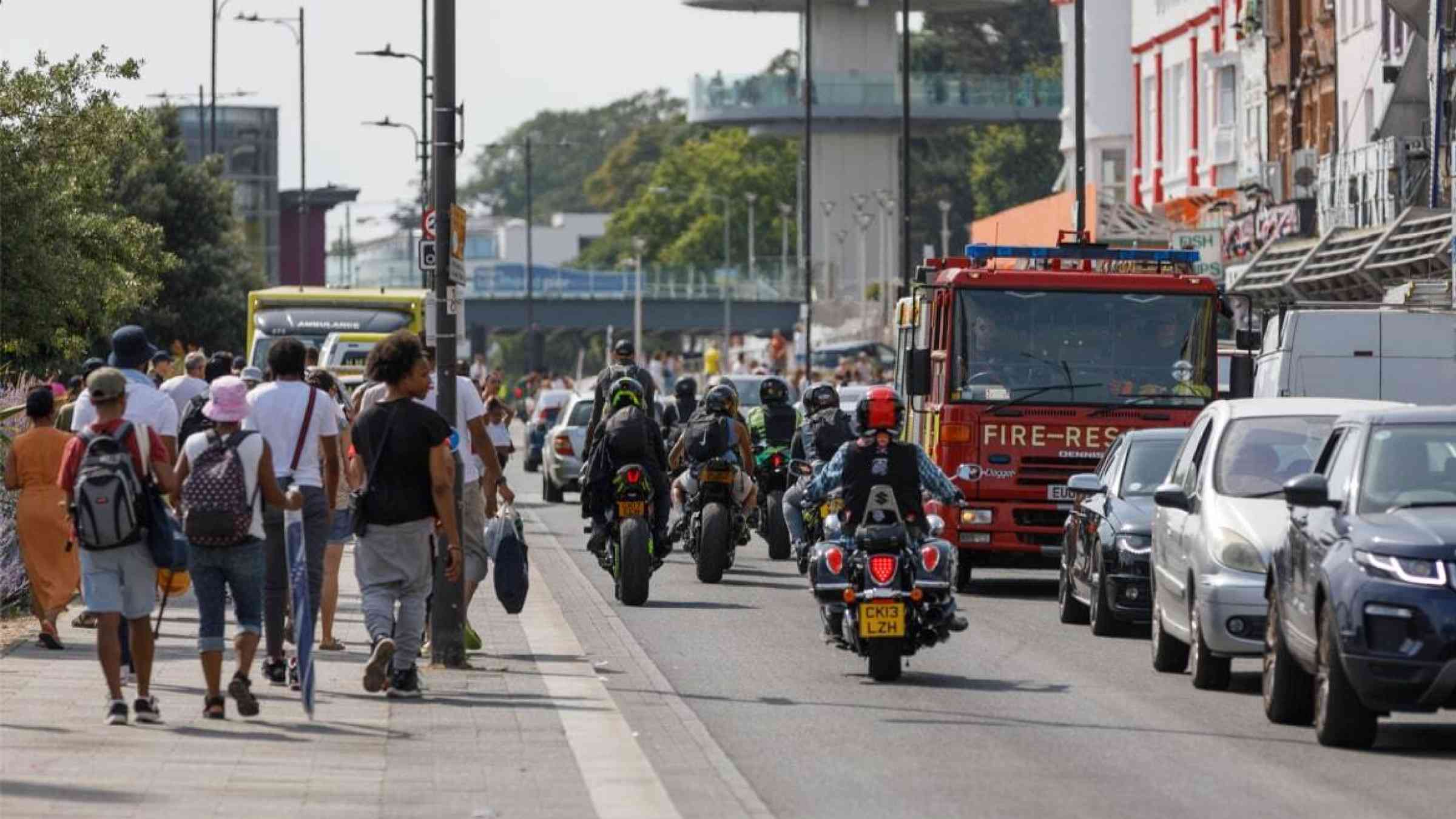Heatwaves: why ethnic minorities in the UK are more vulnerable, and what to do about it

Temperatures in the UK recently breached 40°C for the first time in recorded history. The country is set to experience more frequent and more extreme heatwaves as carbon emissions continue to accumulate in the atmosphere.
Heatwaves have worrying implications for human health including sleep loss, mental illness, and increased mortality and suicide rates.
In August 2003, over 20,000 people died in Europe during an extreme heatwave. Subsequent analysis by climate scientists revealed that the deaths can be directly attributed to anthropogenic climate change. Specifically, climate change increased the likelihood of heat-related deaths by 20% in London and 70% in Paris.
More recently, England recorded 2,556 excess deaths across three heatwave periods in summer 2020.
The UK government has made progress in managing public health risks associated with increased flooding, but more needs to be done when it comes to heatwaves. This is arguably because the lethal effects of heatwaves are less visible to the public – the risk tends to weigh more heavily on vulnerable and socially marginalised groups like elderly people, those on low-incomes and ethnic minorities.
Correspondingly, heat extremes do not typically evoke a strong sense of threat among people in the UK. One video clip which did the rounds on social media during the heatwave, shows a UK television news anchor dismissing a meteorologist’s concern about the potential lethal effects of hot weather.
Racial disparities in heat vulnerability
There are stark racial inequalities in the distribution of heat vulnerability in the UK. Researchers at the University of Manchester recently identified Birmingham, Nottingham and Leicester, as well as the London boroughs of Newham, Tower Hamlets and Hackney as being home to the UK communities that are most vulnerable to heat.
Their study assessed more than 40 factors that contribute to community-level heat vulnerability and found low green space, high crime rates and poor quality housing stock among the most important. Notably, UK residents from ethnic minority backgrounds are four times more likely to live in vulnerable areas compared to white people.
During heatwaves, research in the US has shown that mortality rates tend to be higher among ethnic minorities, particularly black people. Minorities are less likely to have access to air-conditioning, and are more likely to live in dense urban settlements with poor housing and limited open spaces and green areas.
Importantly, being black is not simply a proxy for poverty. Heat-related deaths remain significantly higher among black people in the US even when socioeconomic status is accounted for.
Areas of the UK that are most vulnerable to heat also have considerably lower carbon footprints than average. This is clearly an issue of climate justice.
Feeling the heat
In spring 2022, we conducted a national survey looking into how climate change is experienced among UK ethnic minorities. Over a thousand ethnic minority people participated in the study, which is due to be published in September. Our provisional results show that heat-related impacts are the most common form of climate risk exposure reported by ethnic minorities.
Approximately three in five people (62%) reported that they had experienced a heatwave in the UK that caused sleep loss and discomfort (more than in comparable surveys of the general population). One in three (29%) had suffered disruption to their work or travel due to a heatwave, and a further one in five (17%) had experienced significant negative health effects from a heatwave.
Many ethnic minorities recognise the link between climate change and their experiences with heat. Around three in five participants (61%) felt they had personally experienced climate change and when asked to describe their experiences, a large proportion mentioned heatwaves and rising temperatures.
Addressing inequality
So what can be done about all this? First, climate policy must do more than acknowledge these racial disparities in heat vulnerability exist. An equality analysis of the 2013 heatwave plan for England identified a troubling blind spot: while the plan observed that ethnic minorities may face greater risk from heat due to their concentration in urban areas, it failed to include sufficient evidence or analysis that would determine the impact heatwaves would actually have on them. That’s one reason we need more research that addresses the factors underlying racial inequalities in heat vulnerability.
Second, inequality in heat vulnerability should be a theme rather than a neglected footnote in climate change messaging aimed at UK ethnic minority groups. A high proportion of ethnic minorities care about the climate but the climate and environmental movement does not have a good track record of effectively representing them. Heat could become a widely accessible and relatable messaging theme used to mobilise ethnic minorities for climate action.
In the words of David Moinina Sengeh, the education minister of Sierra Leone who recently spoke at Nottingham University: “When we develop solutions for people at the margins, we achieve a more robust system overall.” Tackling racial disparities in heat vulnerability is not about pandering to minorities. It is about achieving a more robust societal response to worsening climate risks.